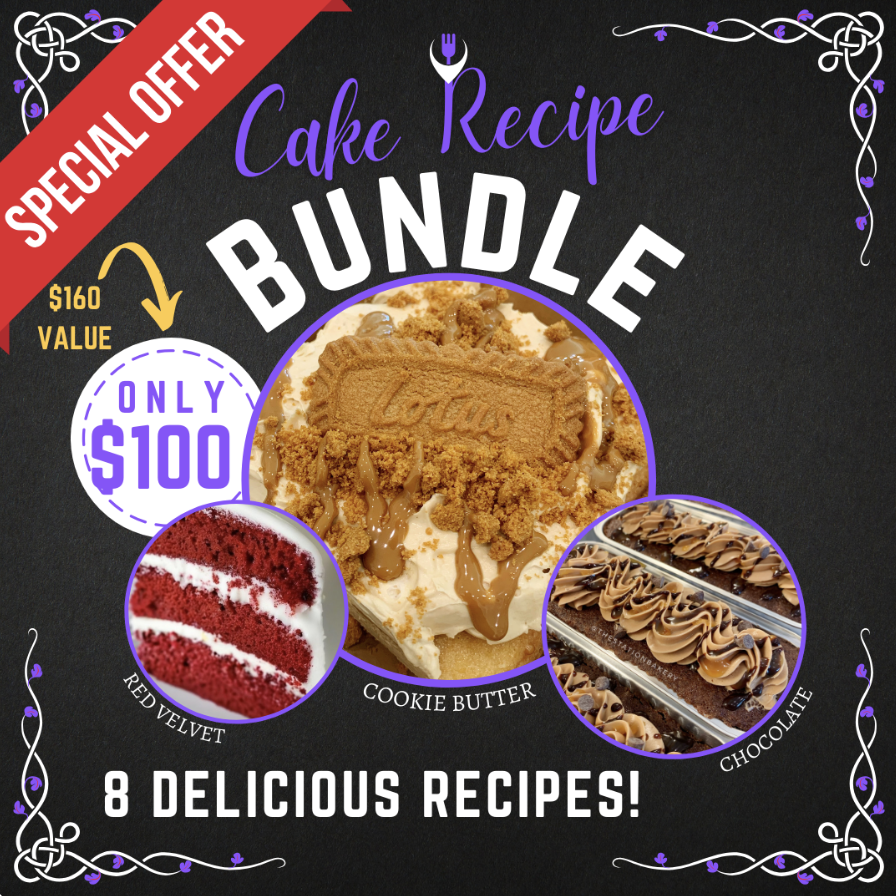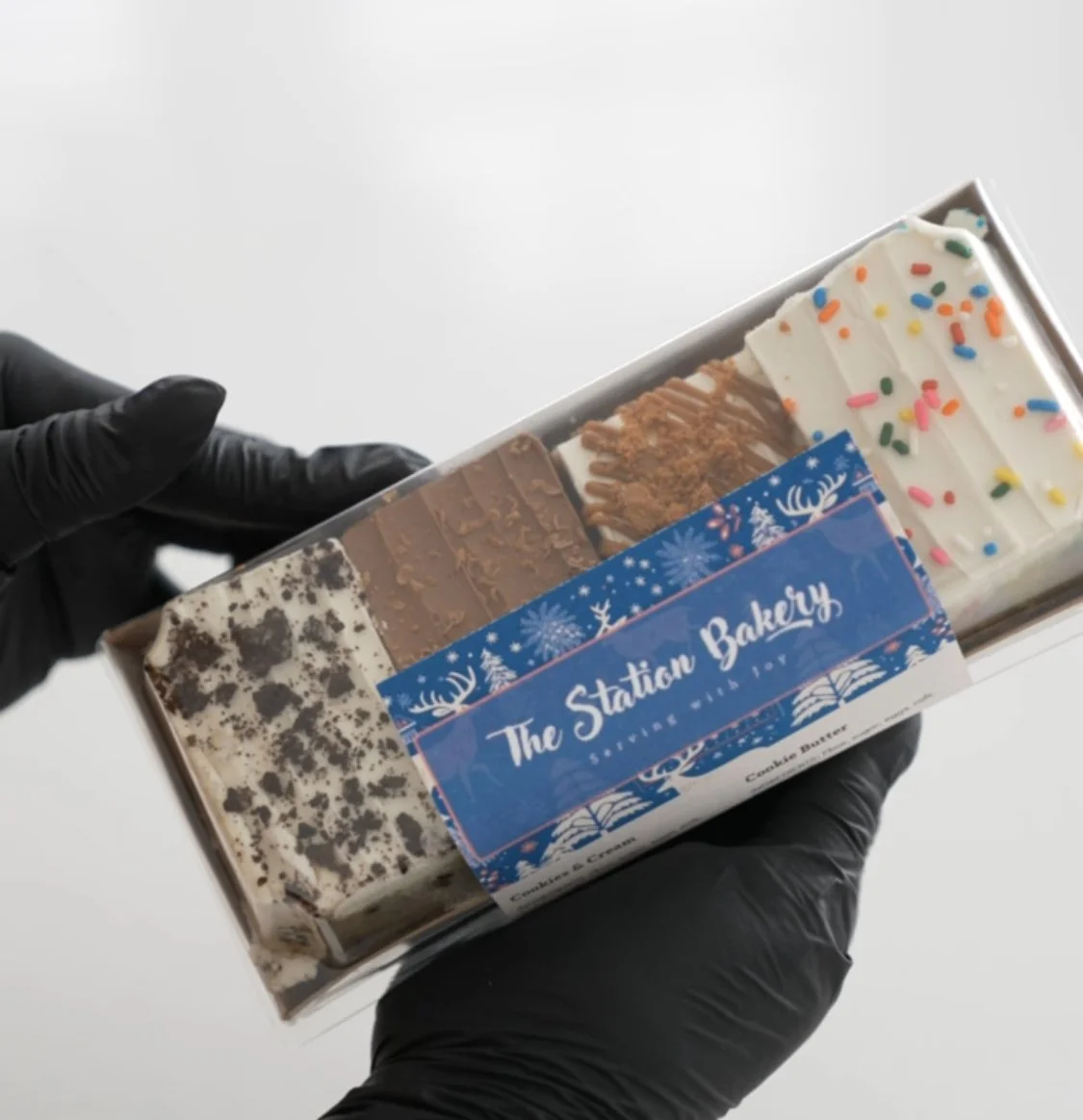How to Price a Cake and Earn a Profit in Your Home Baking Business
Pricing Like A Boss
You are the boss of your business and it’s time to start pricing like it!
I am happy to share a few tips and breakdown my method for pricing my cakes and treats confidently. And if you want my easy way to successfully price my cakes confidently and effeciently, check out my Cake Pricing Calculator here. 😉
Getting Started With Pricing
Before we even begin to look at numbers, we need to look within. Cue calming meditation music. 🧘♀️
The biggest issue with pricing your cakes, is lack of confidence. You’re just getting started and it feels weird to be charging for your work. I mean, who’s going to pay me to make a cake for them? Or, you’ve heard one too many times that your prices are way too high and you believe them and are crippled with fear even thinking about charging any more.
Let me present this situation to you to kind of anchor our thoughts moving forward. You start a new job and on your first day, would you tell them “No, that’s ok. You don’t have to pay me because I’m new and just starting out.”? Or how about they say that’s too much money to pay you for your work and time and skills. Would you take that job, or would you move on to the next job where they value your time and skills? I hope you would choose the latter… 😅
Majority of you wouldn’t dare show up to a job that’s not going to pay you and would probably laugh and scoff at the idea that they even THOUGHT you would. So bakers, WHY IN THE WORLD WOULD YOU NOT PAY YOURSELF FAIRLY IN YOUR OWN BUSINESS!?!?!
You are literally in control, so grab the wheel and let’s drive to success and a profitable business. Who’s ready? 🙋♀️
Know Your Ideal Client and Target Audience
If you were able to build your perfect client’s social media profile, who would they be? A college student? A mom? An elitist? Do they have dietary restrictions? Do they have kids?
Knowing who you ideally would want to sell to is going to help you tremendously in how you create and price your products.
When I started out, I was targeting my friends and family and people from my hometown. I now know and understand, they actually aren’t my ideal client. They have a different level of value for a well designed, tasty cake with bells and whistles. They want simple and to the point and they also look for the cheapest product possible and they are happy with that.
Unfortunately for them and myself, I was not operating in such a way to provide that nor did I have a desire to. And quite frankly, before I had my babies and became a baker, I wouldn’t have been my ideal client either.
I wasted a lot of time and felt a lot of emotions that I could have been spared if I knew who my ideal client was sooner. Thankfully, since you’re reading this, you’ll be sparing yourself from experiencing the same thing!
TIPS FOR KNOWING YOUR IDEAL CLIENT
Be as specific as you possibly can when describing your ideal client.
EX: My ideal clients are middle class parents of multiple kids that take pride in celebrating their loved ones. These customers will be willing to pay a higher price than your average family and aren’t necessarily looking for the cheap route. But they also aren’t looking to spend an arm and a leg.
Consider the price range they would be comfortable paying.
EX: These customers will be willing to pay a higher price than your average family and aren’t necessarily looking for the cheap route. But they also aren’t looking to spend an arm and a leg.
As you create and market, speak to them and their desires and problems and how you provide the solution.
2. Calculate the Cost of Goods
How much does it cost you to make a three layer 6” vanilla cake? What about a batch of vanilla buttercream?
You can never know how much you are profiting from a product if you don’t know how much it costs you to make it.
When costing out your ingredients, be sure to include every ingredient, packaging, labeling and marketing materials, non ingredient items such as foil and parchment paper for storing, toppers, etc.
You can do this by creating a chart or excel document where you list and calculate the amount of each item used and how much it costs.
You can access my cake pricing calculator where I have already created a page for you. All you have to do is input each ingredient and it’s cost, and it will calculate the price based on the amounts used in a recipe. You can get my cake pricing calculator here.
Tips on Calculating Costs
Include every ingredient and material used.
Start with pricing base recipes.
Include costs for packaging.
Take your time and work in blocks. Pricing out all of your items is a process so knock it out chunk by chunk.
Once it’s done, you will only need to maintain it.
3. Calculate Your Time and Skill
Next, you want to calculate in your time and skill. This will be your take home pay/profit.
You can do this a few ways but I’m going to share two: by assigning yourself an hourly pay or by choosing a ((reasonable)) amount you would like to make off of the cake.
So for example, when you choose to go off of time, either calculate the average amount of time it takes you to stack, fill and ice a cake with no decorations or take an estimate. Then, assign an hourly wage that matches your skill and quality. And please, at least pay yourself minimum wage. Or better yet, livable wage!
If you choose to go the lump sum route, choose a reasonable amount that you would like to profit off of a cake. So for example, I know for a basic 6” cake I want to earn at least $35 take home pay, $45 for an 8”, and $55 for a 10”. (Numbers only used as an example and not to be taken to heart.)
Choose these numbers based on your level of skill. Just starting out? Try minimum wage. But never pay yourself under minimum wage. Be fair to you and your clients. But also, take into consideration the average time to make a cake. It will take you longer as a new baker than someone who has more experience so if going the hourly route, pay according to a reasonable time.
So now you’re ready to go off and price like the boss you are, right?? Not quite! Keep reading because there’s more!
4. Factor in Business Costs and Profits
This should include amount for taxes, amount for utilities, rent, tools, licenses, etc. but this is also to make room for growth in your business. How are you going to pay for that shiny new stand mixer? Not out of pocket I hope!
I factor in a profit for my business to help it grow and add that to my total.
Keep in mind this is NOT the same as your personal take home pay. This is the money you will use to reinvest back into your business to grow and expand like buying new tools and machines or even hiring employees!
5. Extra Fees
Lastly, add in any rush fees, delivery fees, bad attitude fees or any other extra fees that need to be added. 😂
This is the base on how I’ve been able to price my products successfully and make a profit and I’m happy to share so you can too!










